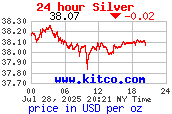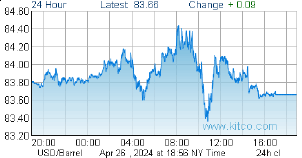TSX Venture Exchange and Gold
The month of September has been a “game changer” for the CDNX for the second year in a row. Last year, the Index broke out in September and went on a Nasdaq 1999-style run with a gain of more than 80% from an early July low to an early March high. This year, the CDNX broke down in September to such an extent that it’s now safe to say the bull market phase that started at the very end of 2008 is over – the CDNX is now in the grips of a bear market which could last well into next year. There will be trading opportunities and many great long-term “buys” but what this unfortunate and sudden turn of events means, in our view, is that the world has entered a very dangerous economic period that has the potential of becoming quite frightening in the months ahead.
Cracks first started to appear in the CDNX during the first quarter of this year when the Index curiously began to under-perform against the broader markets after many months of out-performance. The CDNX has proven to be an astoundingly reliable leading indicator of the major markets in general and even the overall economy. Normal major corrections during a CDNX bull market typically last anywhere from a month to several months with an average drop of around 25%. In this instance, the CDNX has gone beyond what would be considered a normal correction with a 17% drop over just the last 11 sessions inflicting serious technical damage. The Index has now declined 998 points or 40% from the March 7 high of 2465, leaving the 300 and 500-day moving averages destined to reverse to the downside sometime during the fourth quarter (the last time this occurred was just prior to the 2008 Crash). This is particularly disturbing given the fact that Gold is trading at over $1,600 an ounce. The “correction” argument was valid up until the last two weeks in particular when the CDNX started warning us in very clear fashion that something is seriously wrong with the global economy. This has also been confirmed by the breakdown in Copper. The commodity-driven Canadian dollar is also suffering. All these factors point to the strong likelihood of Canada and other countries slipping into recession despite widespread assurances from government and even private economic forecasters that this won’t occur.
We’ve brought this up before but the weakness in stocks at the moment reflects a loss of confidence in political leaders and (tax and spend) governments in general. The euro zone, of course, is a basket case at the moment and just today it was announced that Greece won’t be able to meet its 2011-2012 deficit targets imposed by international lenders as part of the country’s bailout. Greece is destined to go bankrupt with Ireland, Portugal, Spain and Italy also in major financial distress. In the United States, President Obama is engaged in class warfare and continues to pursue reckless economic policies that have divided the nation and paralyzed Congress until the November 2012 elections. In addition, the Fed – which came to the rescue of the markets in 2009 and 2010 – appears to be out of bullets.
Meanwhile, Canada has its own freak show getting underway. The country’s two largest provinces, Ontario and Quebec, are each in a fiscal mess (they also lack effective political leadership) with Ontario shockingly on the verge of electing a Liberal-NDP “coalition” that will surely drive that province into the ditch (or, even worse, over the cliff). The National Post’s John Ivison correctly describes NDP leader Andrea Horwath as “Ontario’s most dangerous woman”. Even the liberal-leaning Globe and Mail stated in an editorial tonight that “if given an opportunity to influence policy, either in government or in a minority parliament, (Horwath’s NDP) would wreak havoc on Ontario’s economy”. The current political situation in Quebec is equally disturbing, and the Liberal government there is proposing legislation (Bill 14) that could have major adverse affects on the mining industry.
As Ronald Reagan so famously stated, “Government is the problem, not the solution”. For investors, governments almost everywhere are the problem right now. Markets are making that abundantly clear. The pathetic and misguided Wall Street protestors, who are playing right into Obama’s class warfare strategy, are an example of how the seeds of social unrest are now beginning to sprout in the United States.
The CDNX was off 79 points last week or 5% to close at 1467. From a technical perspective it seems almost certain the July 2010 low of 1343 will be tested this month. The TSX was actually up 1.4% last week, the Dow fell 1.3% while the Nasdaq was off 2.7%.
Gold
Gold may have hit an important bottom last Monday when it found support just a few dollars above its 200-day moving average (SMA) and bounced off an important trendline support channel as shown in the 2.5-year chart below from John that we posted last Monday evening:
The long-term bull case for Gold remains solidly intact even in the event of a spike to the downside, below the trendline support, which it seems could only be caused by a stock market crash and liquidity trap that temporarily forced traders and investors out of Gold to raise cash. Such a downside move would likely be short-lived, just like in 2008 when Gold fell as much as 30% and then quickly went on to new highs.
Gold finished down $42 last week to close at $1,625. Silver dropped as low as $26 and recovered to finish at $29.97, a loss of 96 cents for the week. Copper fell another 15 cents to $3.15. Crude Oil declined $1.81 to $78.04 while the U.S. Dollar Index showed continued strength as it gained another half point to 78.79.
The “Big Picture” View Of Gold
As Frank Holmes so effectively illustrates at www.usfunds.com, Gold is being driven by both the Fear Trade and the Love Trade. The transfer of wealth from west to east, and the accumulation of wealth particularly in China and India, is having a huge impact on Gold.
The fundamental case for Gold remains incredibly strong – currency instability and an overall lack of confidence in fiat currencies, governments and world leaders in general, an environment of historically low interest rates and negative real interest rates (inflation is greater than the nominal interest rate even in parts of the world where rates are increasing), massive government debt from the United States to Europe, central bank buying, flat mine supply, physical demand, investment demand, emerging market growth, geopolitical unrest and conflicts, and inflation concerns…the list goes on. It’s hard to imagine Gold not performing well in this environment. The Middle East is being turned on its head and that could ultimately have major positive consequences for Gold.
What’s also driving Gold is the weakness of the United States, brought on in no small part by one of the most ineffectual Presidents the nation has ever been saddled with. America has lost its way and the recent S&P downgrade is both a real and a symbolic reflection of that. Since the summer of 2009, the U.S. economy has produced a net total of just two million jobs while federal spending has gone through the roof. Throughout its incredible history, the United States has demonstrated an amazing resiliency and the ability to bounce back from major economic, social and political troubles. It will do so again but this will take time and a real Commander-in-Chief in the White House by November, 2012. By then Gold will have climbed another 50% or more.
 BullMarketRun.ca
BullMarketRun.ca









I completely agree with you – the Government is the problem. Blaming speculators and bankers is to not look at the root cause. The danger as I see it is that the socialist movement will grow in strenght across the globe and cripple capialism leading to years negative growth.
Comment by Hugh — October 3, 2011 @ 2:04 am
Government is the problem???? Government looked the other way as wall street robbed us all!!!! Thank God the LIBERAL party was in power here in Canada and stopped our banksters from joining the party!!
Comment by dave — October 3, 2011 @ 7:09 am